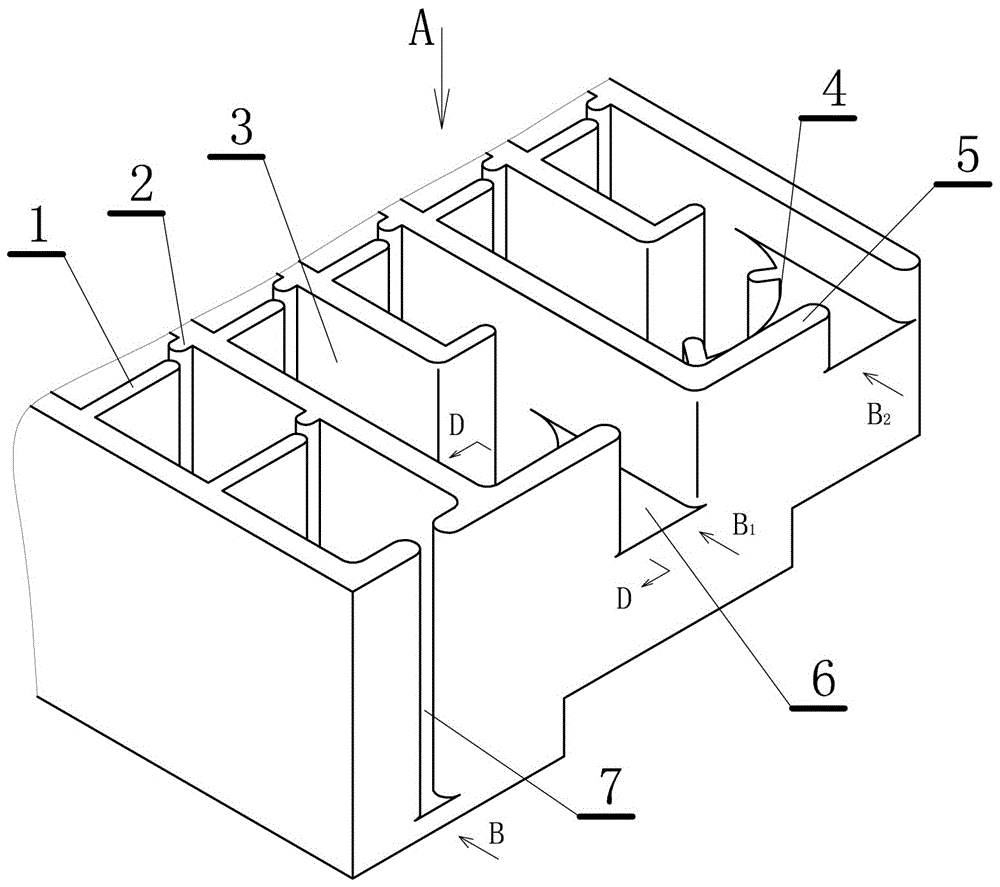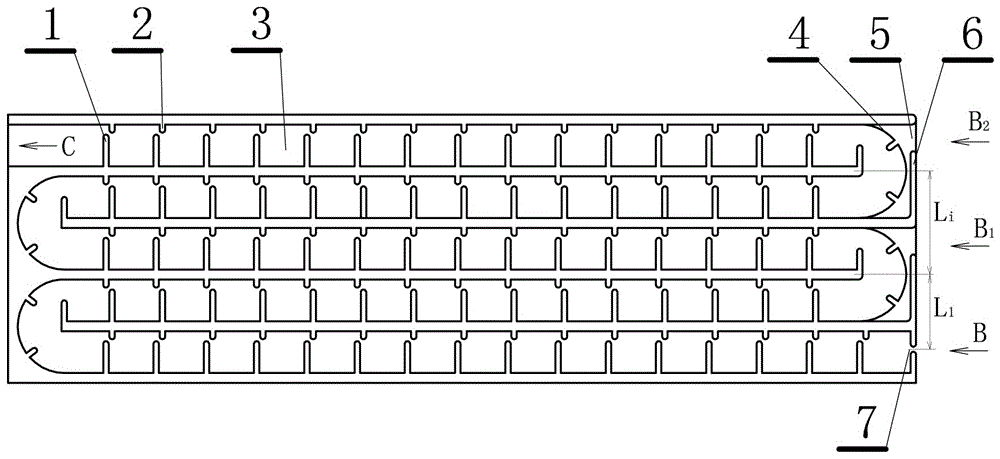A Fishway Entrance and Design Method Adapting to Water Level Changes
A design method and technology of changing water level, which are applied in the fields of hydraulic facilities and design for protecting fish ecology, environmental protection facilities and design, which can solve the problem of increasing construction investment costs, post-operation costs and equipment operation and maintenance costs, and increasing the design of energy dissipation bodies. Research difficulty, increase the difficulty of fishway operation and management, etc., to achieve good water level amplitude adaptability, improve fish passing efficiency, and improve fish feeding efficiency.
- Summary
- Abstract
- Description
- Claims
- Application Information
AI Technical Summary
Problems solved by technology
Method used
Image
Examples
Embodiment 1
[0048] This embodiment is a fishway inlet that adapts to changes in water level, such as figure 1 , 2 , 3 shown. Including: a vertical slit fishway with at least two 180° turning sections 4, the vertical slit fishway includes a straight section connected by a plurality of pools 3 with inclined bottoms. The partition 1 on the left bank or the right bank and the straight section guide plate 2 arranged on the right bank or the left bank relatively staggered from the partition are separated. The fishway inlet includes a vertical slot inlet 7 side by side with at least one 180° turning section, The height 401 of the turning side wall of each 180° turning section side by side with the vertical slot inlet is the working water depth of the section. The turning side wall is provided with a retaining wall 6 and the retaining side wall is set There is a gap in the fish 5.
[0049] This embodiment uses the 180° turn-back section of the fish pass to set gaps at different levels. When the wa...
Embodiment 2
[0054] This embodiment is a method for designing a fishway entrance adapted to the fluctuation of the water level described in the first embodiment. The specific steps of the method are as follows:
[0055] The vertical seam inlet floor elevation can determine the minimum water depth of the vertical seam section, which is calculated according to the following formula:
[0056] H inlet = H min -h min
[0057] Where H inlet —— Vertical seam imported bottom plate elevation, H min ——Minimum water level of vertical seam inlet, h min ——Minimum water depth of vertical seam inlet;
[0058] The maximum water depth and minimum water depth of the vertical slit inlet determine the minimum and maximum flow velocity of the vertical slit section respectively. Calculate the maximum water depth and minimum water depth of the vertical slot inlet according to the following formula:
[0059]
[0060]
[0061] Where h max ——Maximum water depth of vertical seam inlet, h min ——Minimum water depth of ...
Embodiment 3
[0082] This embodiment is an improvement of the second embodiment, and is the refinement of the second embodiment regarding the vertical slit inlet. The width of the vertical slot entrance described in this embodiment is 3 / 20 to 4 / 20 times the width of the fishway. This parameter is determined according to the type, size, and habits of migratory fish.
[0083] The more optimized value is: 3 / 20 times.
PUM
 Login to View More
Login to View More Abstract
Description
Claims
Application Information
 Login to View More
Login to View More - R&D
- Intellectual Property
- Life Sciences
- Materials
- Tech Scout
- Unparalleled Data Quality
- Higher Quality Content
- 60% Fewer Hallucinations
Browse by: Latest US Patents, China's latest patents, Technical Efficacy Thesaurus, Application Domain, Technology Topic, Popular Technical Reports.
© 2025 PatSnap. All rights reserved.Legal|Privacy policy|Modern Slavery Act Transparency Statement|Sitemap|About US| Contact US: help@patsnap.com



